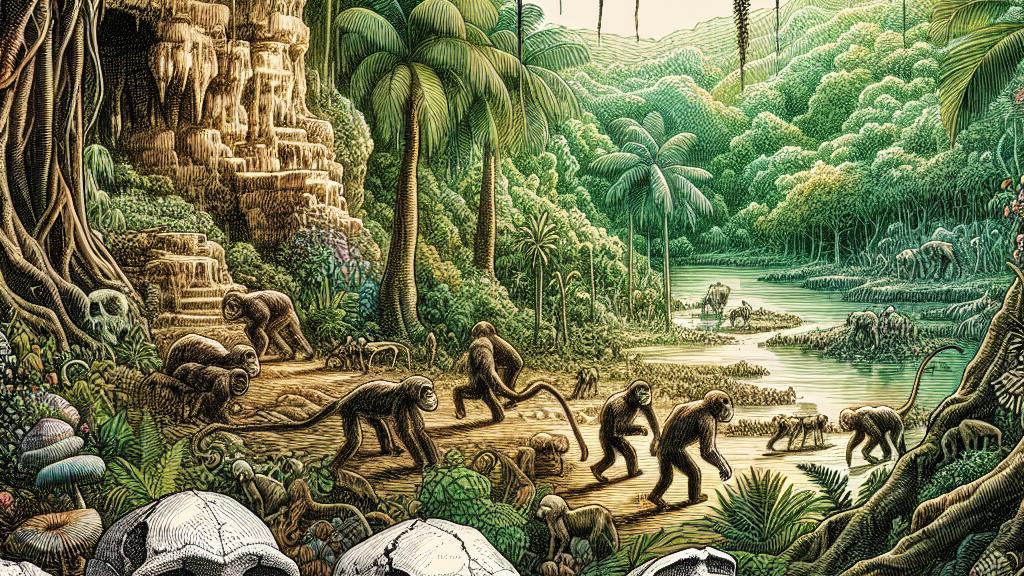Understanding the Extinction of Caribbean Monkeys Through Fossil Discoveries
Overview
- Fascinating fossil discoveries of Antillothrix reveal the story of Caribbean monkeys.
- Innovative research uncovers vital insights into the anatomy and ecology of these ancient primates.
- The findings inspire significant conservation strategies to safeguard existing biodiversity.

Fossil Discoveries in the Dominican Republic
In an extraordinary journey into the depths of the Dominican Republic, divers from the Speleological Society have made astonishing fossil discoveries that unveil the secrets of Antillothrix bernensis—an ancient Caribbean monkey. Nestled within the enchanting Cueva Macho, which is now recognized as the richest source of primate fossils on Hispaniola, these incredible finds include seven well-preserved skulls and numerous jaw fragments. This vast collection not only provides vital anatomical details but also opens a window into the past, helping scientists understand the ecological environment in which these creatures lived and the factors that may have contributed to their extinction nearly 10,000 years ago. Picture a thriving landscape where these monkeys once roamed—this is the realm these fossils help us to envision.
Understanding the Extinct Species
Exploring the life and times of Antillothrix is like piecing together a historical puzzle filled with intriguing details. For example, research has revealed that male and female monkeys of this species exhibited little size difference, weighing up to five pounds—suggesting they lived in cohesive family units, much like modern-day primate groups. In addition, their diet primarily consisted of fruits, as indicated by their rounded teeth, reminiscent of the dietary habits of today’s Titi monkeys. This aspect of their biology not only emphasizes their adaptive strategies but also paints a vivid picture of their daily lives—from foraging for fruits in the lush canopy to potential social interactions within their family groups. Each fossil thus tells a story, drawing us closer to understanding their existence and eventual demise.
Implications for Modern Conservation
The lessons learned from the Antillothrix fossils extend far beyond mere academic interest; they resonate deeply with the urgent need for modern conservation. By dissecting the ecological pressures that led to the extinction of these ancient monkeys, researchers are uncovering crucial insights that can inform current biodiversity protection strategies. If habitat loss and competition were detrimental back then, safeguarding existing wildlife from similar fates becomes paramount today. This relationship between the past and present underlines a powerful message: understanding historical extinction offers valuable guidance for conservation efforts. As we strive to preserve our planet's remaining biodiversity, insights from Antillothrix not only highlight the fragility of ecosystems but also reinforce the imperative for proactive measures. Indeed, each discovery serves as a clarion call, reminding us that the stewardship of our natural world is not only a responsibility but a necessity for future generations.

Loading...